To provide safety, facilitate feeding, and promote mutual bonding, human infants, who are born helpless and defenseless, are traditionally in contact with their mothers day and night. But mothers also contribute at least half of the labor needed to keep their families and communities together, which means that mom needs her hands free. Maybe she’s weaving. Perhaps she’s gathering from the garden or traveling to get water from the village well. It could be that she’s cleaning the house and typing reports to sustain her woman-owned small business. Regardless of how she multitasks, her young child needs to be nearby. Creative beings that they are, mothers have solved this in several ways throughout history and around the world. Here are some of the most common solutions they’ve devised.
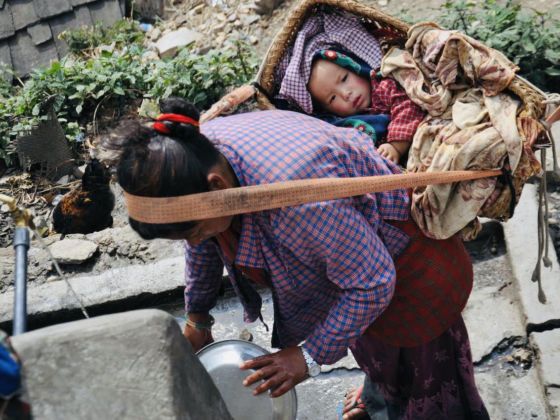

The Wonderful and Varied Ways Mothers Carry Their Babies Around the World
Babywearing
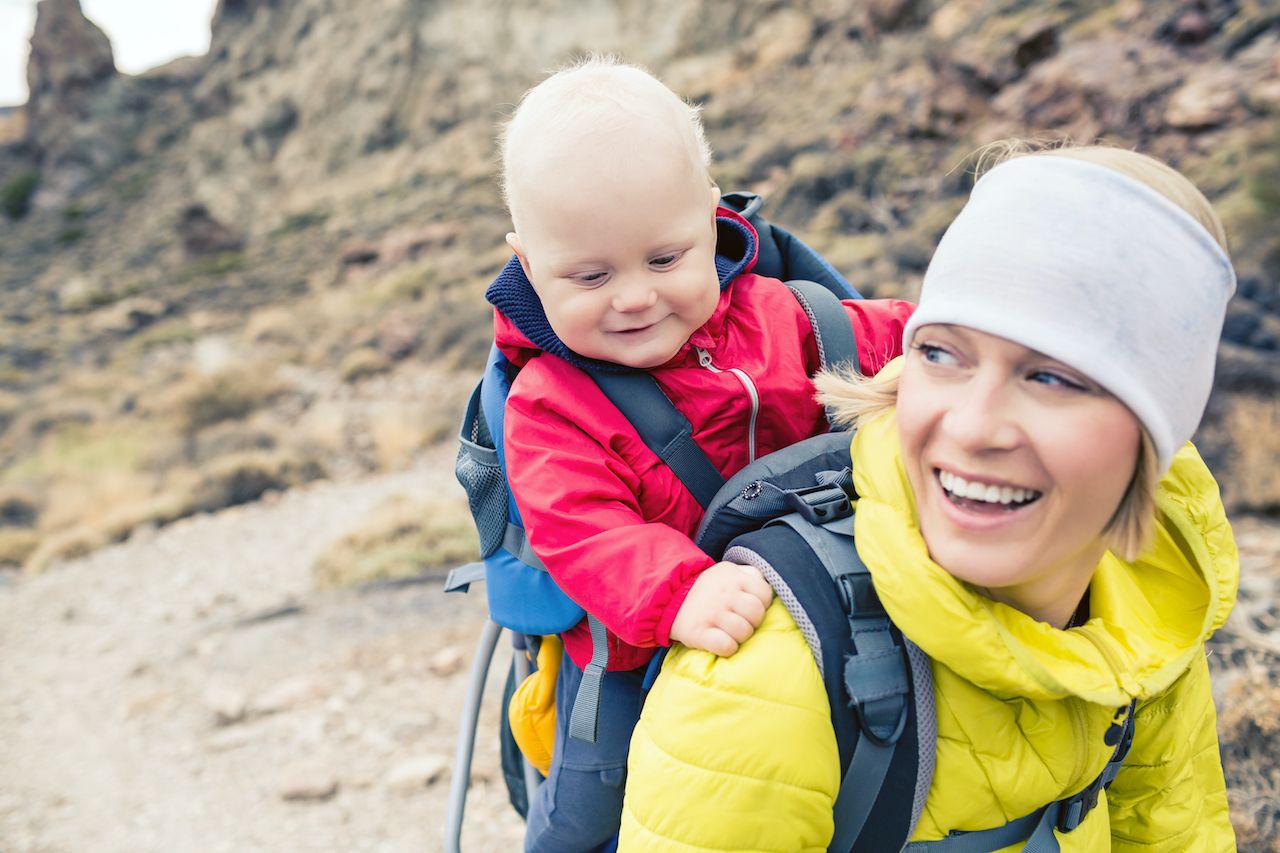
Photo: Blazej Lyjak/Shutterstock
Even though babywearing has dramatically taken off in the West since the early 2000s, leaving strollers in the dust, the practice is not new; it’s been the traditional way to transport infants around the world for thousands of years — some of the first examples of art depicting babywearing come from Egypt dating as early as 30 BCE.
Babywearing techniques include wrapping the child on the chest, carrying them on the back, or attaching them to the side of the body with baskets, cradleboards, cloth, and slings that range from traditional, colorful fabrics passed down through generations to factory-made carriers like Baby-Bjorn, ErgoBaby, and more.
In Africa
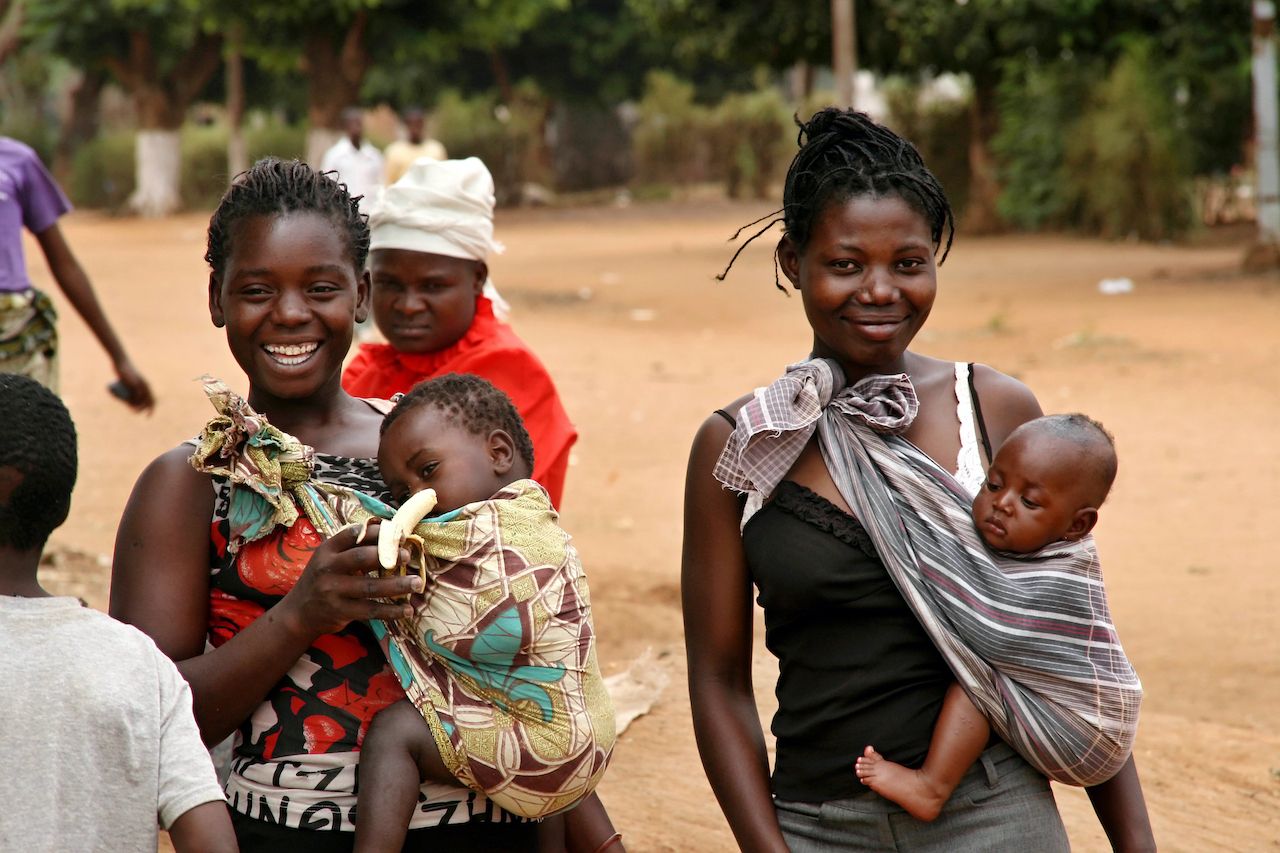
Photo: Vladislav T. Jirousek/Shutterstock
Mozambican mothers traditionally carry their infants in a piece of printed cotton material called a capulana. Capulanas are versatile pieces of cloth that can be used as a skirt, a veil, and/or a shawl to carry belongings and as a sling to carry babies. Said to have originated in India and circulated to Africa via trade routes, capulanas are common gifts for new mothers and come in joyful patterns and colors.
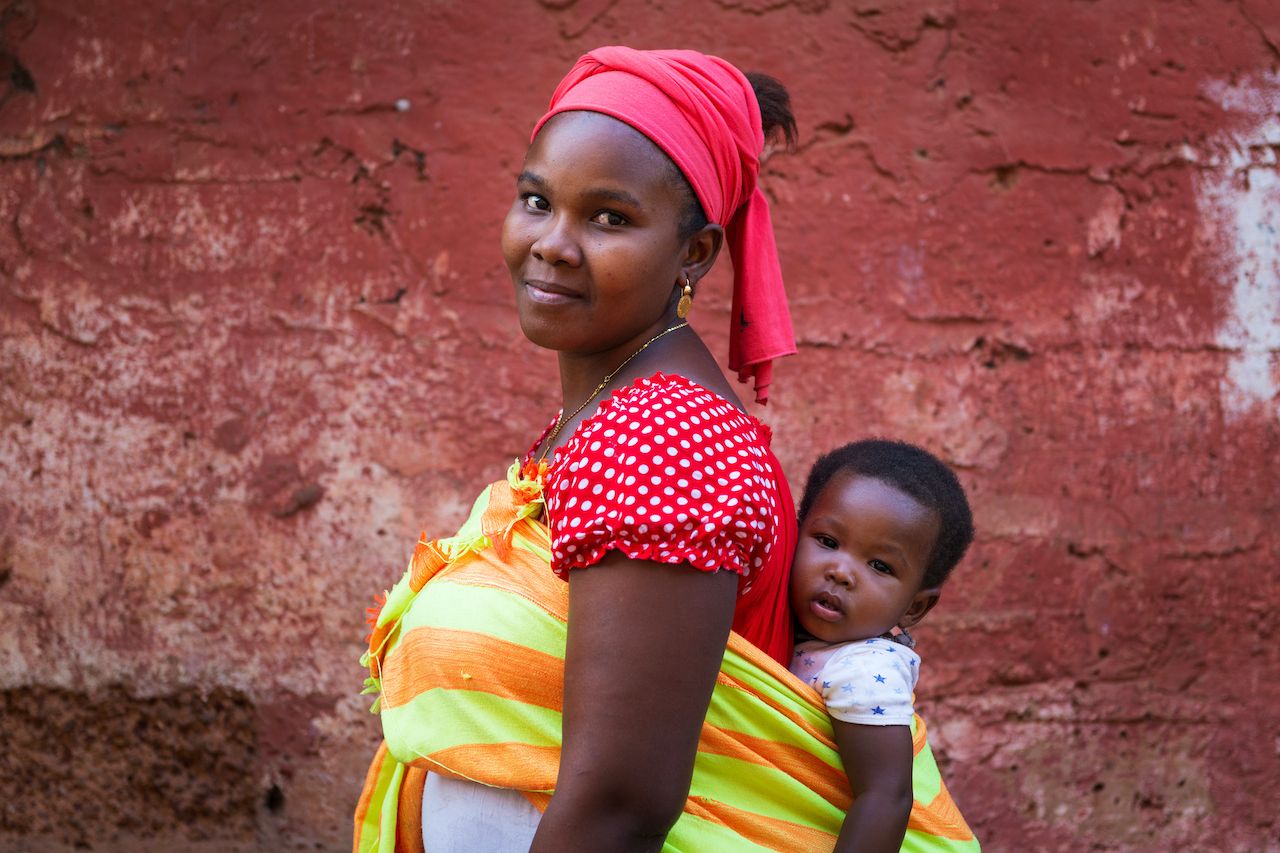
Photo: Peek Creative Collective/Shutterstock
Lightweight wraps called kangas appear to have originated in the Yoruba culture in Benin and southwestern Nigeria but are now found throughout the African continent. Kangas are large rectangular cloths that usually feature a colorful border design with a different, simpler design in the center of the fabric. Mothers wrap kangas around their bodies like a towel to carry their babies on their backs. They roll up the material on their chest and tie the ends while babies are tightly secured. After the baby is self-sufficient enough to toddle, kangas are transformed into aprons or towels or whatever Mom needs a large fabric for.
In the Americas
People of the Americas also wear their babies on their bodies, often on the back versus the front or side of the body.
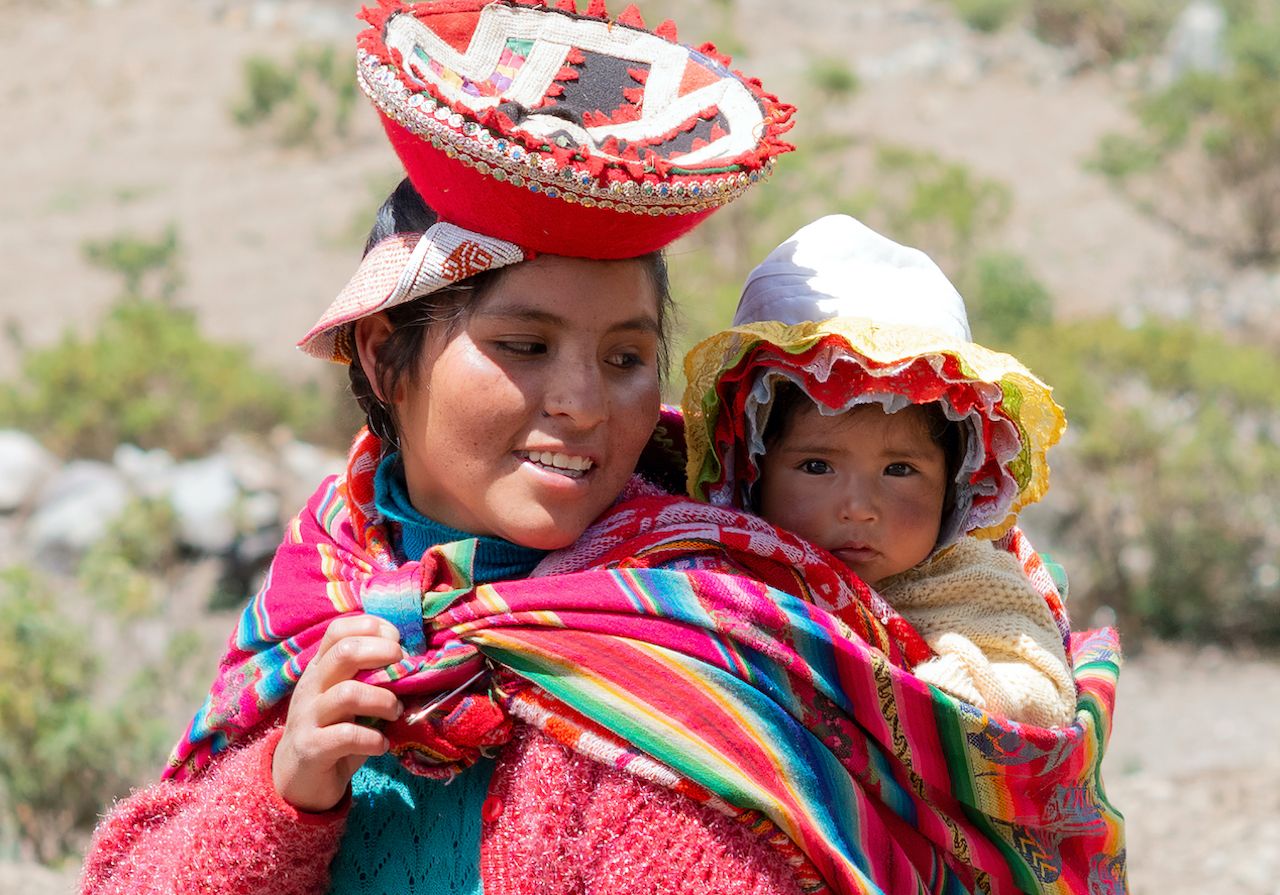
Photo: dani3315/Shutterstock
Andean mothers wear a manta. These thick, woolen, blanketlike fabrics are beautifully woven textiles. They can be made from sheep, alpaca, or llama wool and are tied around the neck and shoulders.
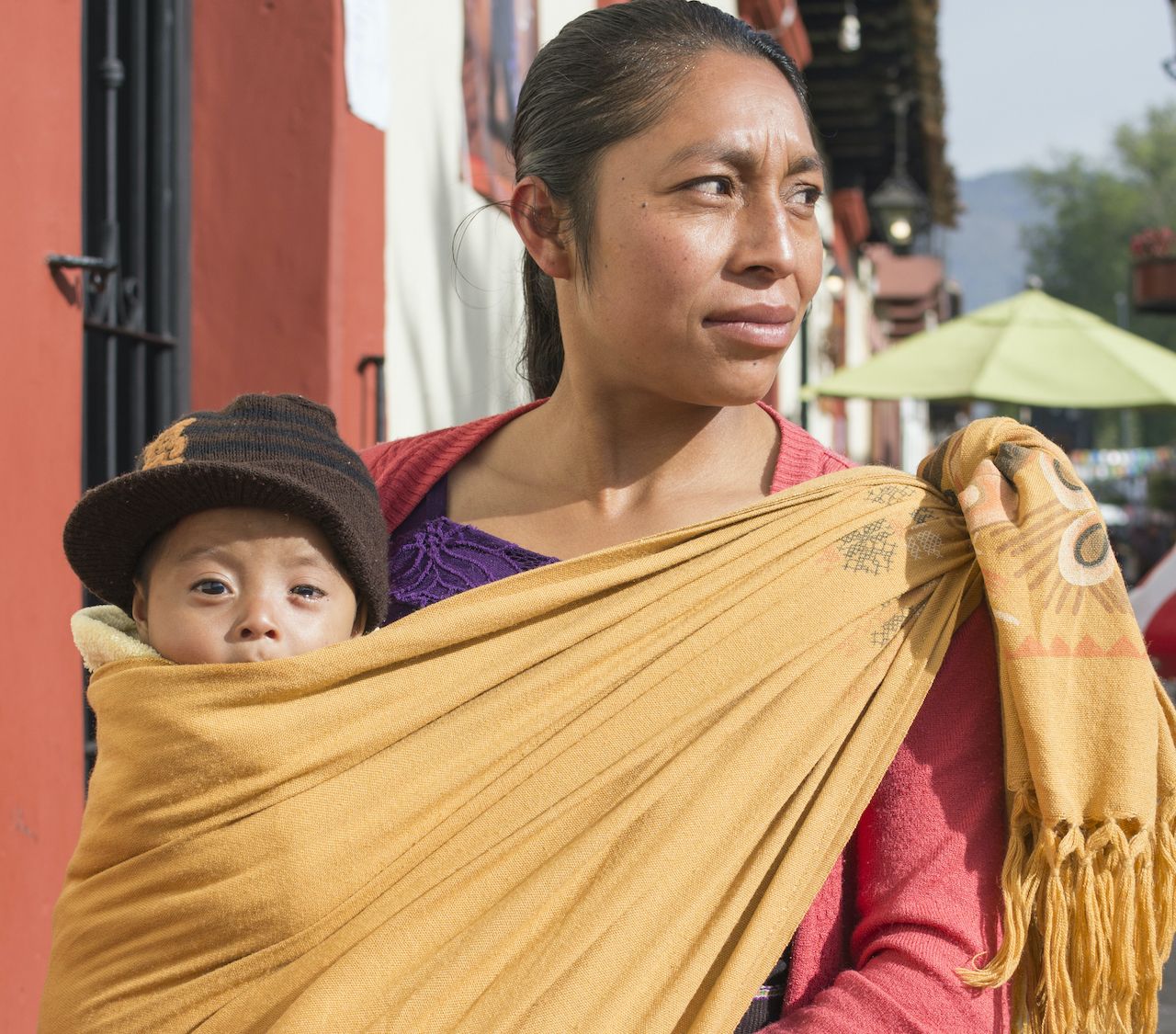
Photo: Chad Zuber/Shutterstock
Throughout Mexico, rural weavers and other craftswomen wear babies in a rebozo, a long, narrow rectangle of fabric that indigenous Mexican women use to attach their kids to their hips or front of the body. It’s usually woven from cotton on a backstrap loom.
Kogi women of Colombia strap their newborn to their backs in a large cloth similar to other slings around the world. However, their slings add an additional strap that goes around mom’s forehead.
In Asia
In Asia, colorful baby slings tend to involve more straps than those found in other parts of the world.
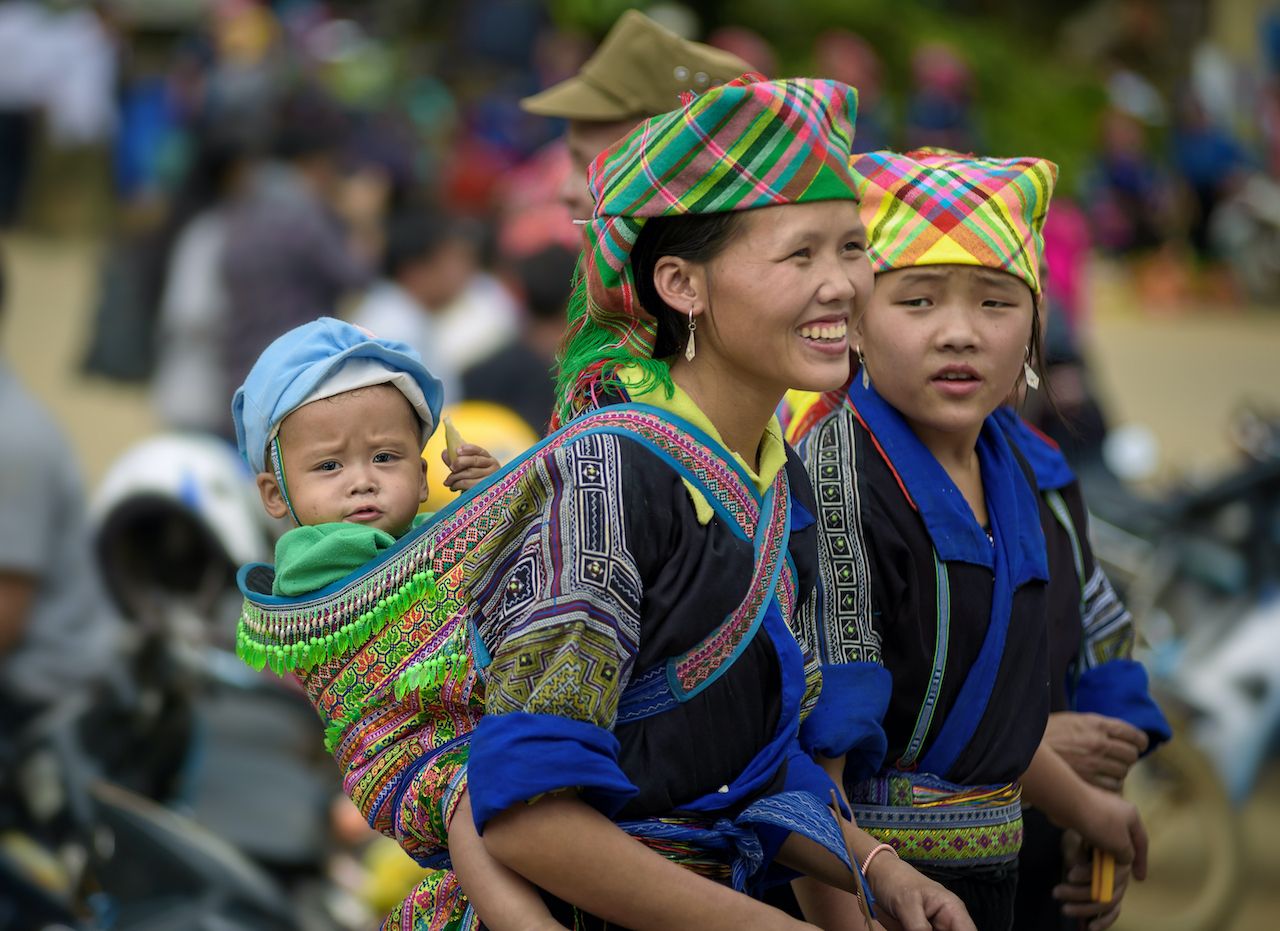
Photo: Suriya99/Shutterstock
One of the most ornate examples of baby carriers found in Asia is the one crafted by the Hmong people, an ethnic group living in Laos, Thailand, Vietnam, Myanmar, and southwestern China. Made of material decorated by intricate embroidery, appliqué, and reverse appliqué, Hmong baby carriers consist of a large rectangle of vibrant fabric on which two straps are sewn at the top. Baby is wrapped by the cloth on the mom’s back and tightly secured by the straps that weave around the mom’s arms, below the baby’s behind, and around the mom’s waist.
In Japan mothers craft a carrying device called an onbuhimo to strap the child to their back. Likely developed by indigenous islanders, it looks like a typical daypack but with wider straps. It is strong enough to transport kids ranging from infant to toddler-size. Today, onbuhimos are also created both by hand and in factories for mothers all over the world. Instead of fabric, straps are now often made of webbing.
Cradleboards
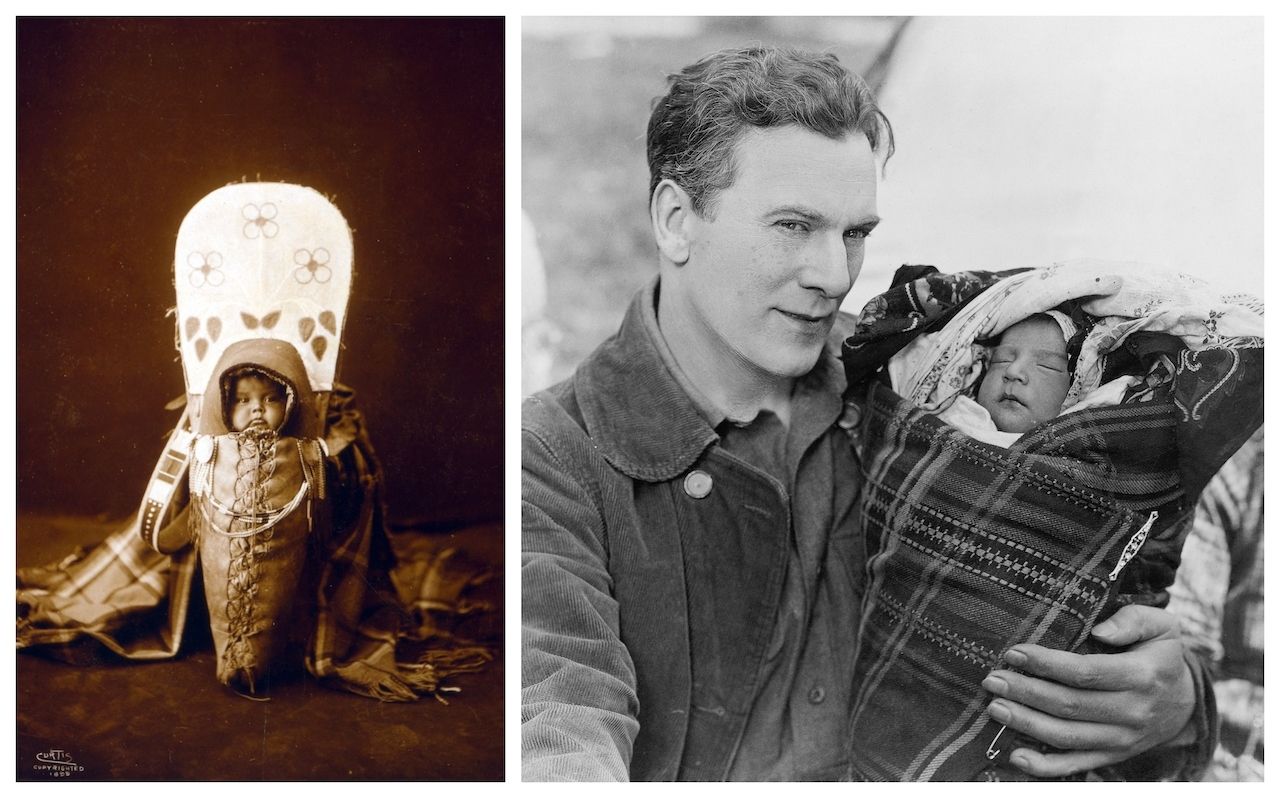
Photo: Everett Historical/Shutterstock + Everett Collection/Shutterstock
Cradleboards are traditional to cultures around the world, and while they might seem harsh or too firm, they were used for centuries to swaddle and safely transport Native infants. Cradleboards are sacred to the Ojibwe, Lakota, Hopi, Navajo, Kiowa, Comanche, and Iroquois peoples of North America. In North America cradleboards are often erroneously called papooses, which actually means “child” in the Algonquian language. Cradleboards were also used by cultural groups outside the continent, like the reindeer-herding Saami people of Norway, Sweden, Finland, and a small part of Russia.
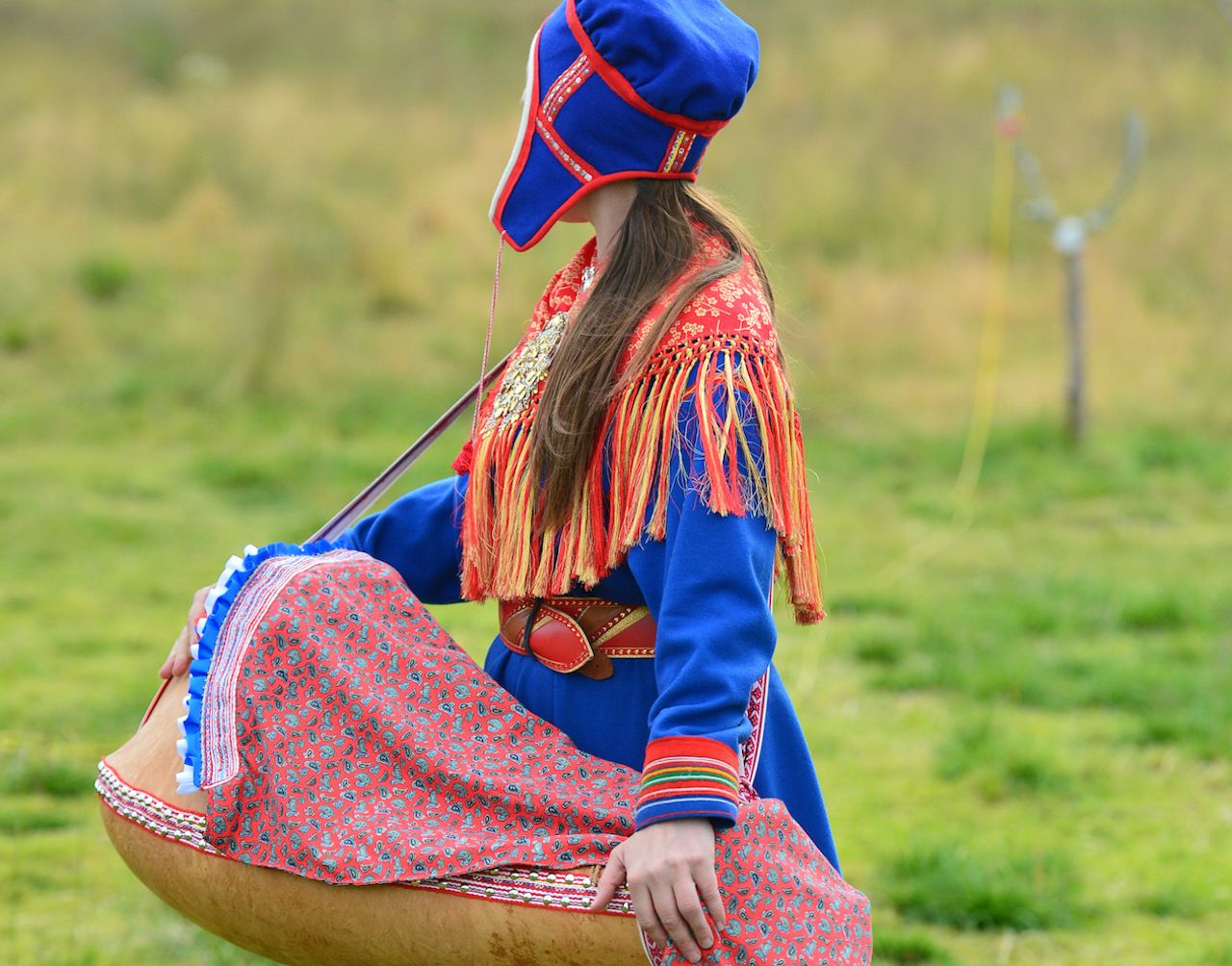
Photo: V. Belov/Shutterstock
According to Dawn Scher Tomae, Curator of Anthropology Collections at Milwaukee Public Museum, cradleboards are no longer used as baby transporters but rather as vehicles of cultural continuity. At least among Native American peoples, now cradleboards are ornately decorated and passed down through the generations as ways to connect with the ancestors.
“Cradleboards are not used as the typical way to carry babies today even by most indigenous peoples … nor were they used by all North American Indian tribes. With that said, there has been a resurgence in their creation to a limited extent … as a way to affirm a connection to the ancestors through cultural identity. Miniature cradleboards, too, were made for dolls for children and then later for tourists (especially the Apache ones are quite well known),” she said.
Amautis

Photo: RUBEN M RAMOS/Shutterstock
Wrapping a baby in the mother’s own clothing is particularly beneficial in cold climates. The Inuit mothers of Northern Canada know all about harsh weather and below-zero temperature and traditionally carry their infants until two or three years of age in an amauti, a woman’s coat made of animal fur and sinew. Today, amautis can be made of other material, such as quilted cotton, but the design remains the same: an overhead parka with large shoulders, two flaps (one short one in the front and one long one in the back), a large hood, and a baby pouch.
The baby is carried in the pouch at the back of the parka, below the hood, and can either have their legs around the mother’s waist, be swaddled in cloth and “stand” in the pouch, or sit. In this pouch, the baby has constant contact with its mom, and the large shoulders of the garment allow for the child to be brought to the front for feeding when needed. The hood can be pulled up to protect both mother and child from the cold. Different regions have different styles: Some have wider shoulders; others are more or less decorated. Generally, they are colorfully beaded and trimmed with various furs.
Baskets
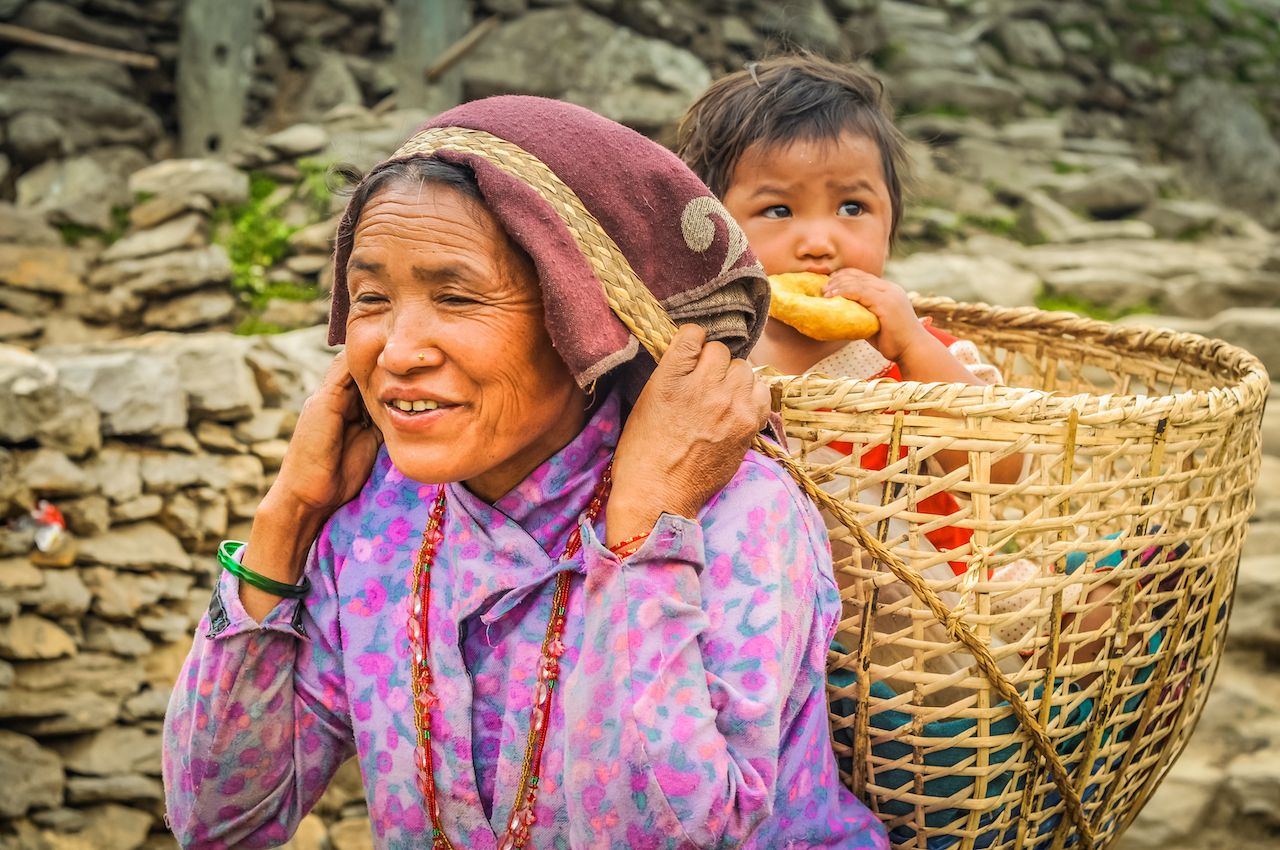
Photo: Michal Knitl/Shutterstock
While more cumbersome and heavier, baskets are one of the many ways mothers around the world carry their little ones. In Nepal, the practice of carrying infants in wicker baskets strapped to the mom’s head is very common. The shapes and sizes of baskets vary, from very common and traditional conical ones called doko to rectangular ones, but they all do the job and free up the hands of busy mothers. When not used for infants, the baskets can carry crops, wood, etc.